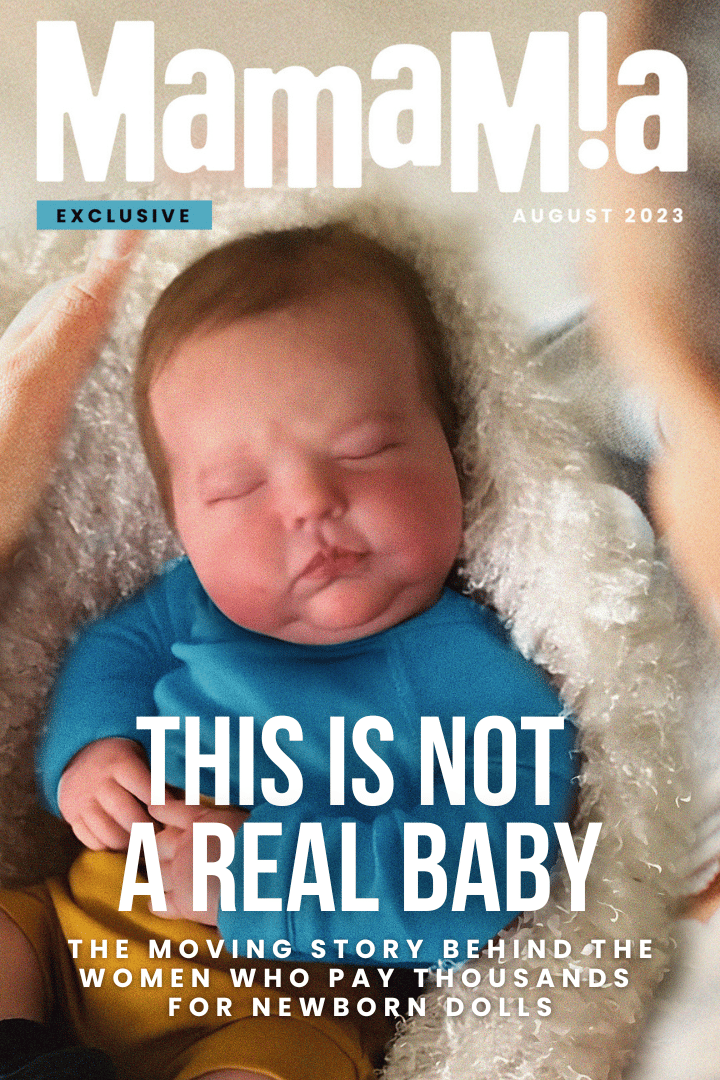Content warning: This post deals with descriptions of domestic violence and child loss, which may be confronting for some readers.
Nothing gives Patrizia Bartolomei more comfort than when she swaddles Daniel. She loves giving him a bath - relishing in the ritual of washing his skin, using a soft towel to dry him, and then dressing him in a clean nappy and fresh set of clothes. She also tops up his bottle and stores a spare one in his pram.
Daniel's skin is subtle, his fingernails tiny and his eyes big and brown. Hugging Daniel to her chest makes her feel secure. It's a feeling she has yearned to have for a long time.
Despite calling Daniel her son, Patrizia is completely cognisant of the fact that Daniel isn't a real infant. He is a doll.
Some women purchase these lifelike therapy dolls, known as "reborn babies" or "reborn dolls", as a fun hobby. For others, like Patrizia, these dolls are a means of therapy or comfort, whether related to mental health, child loss, miscarriage or loneliness.
It's been 22 years since Patrizia has seen or heard from her sons. She still grieves the estrangement every day. But the day Patrizia first held a reborn doll in her arms, which weighs the same as a newborn, a nurturing feeling took over her. It was a once-familiar feeling she had missed.
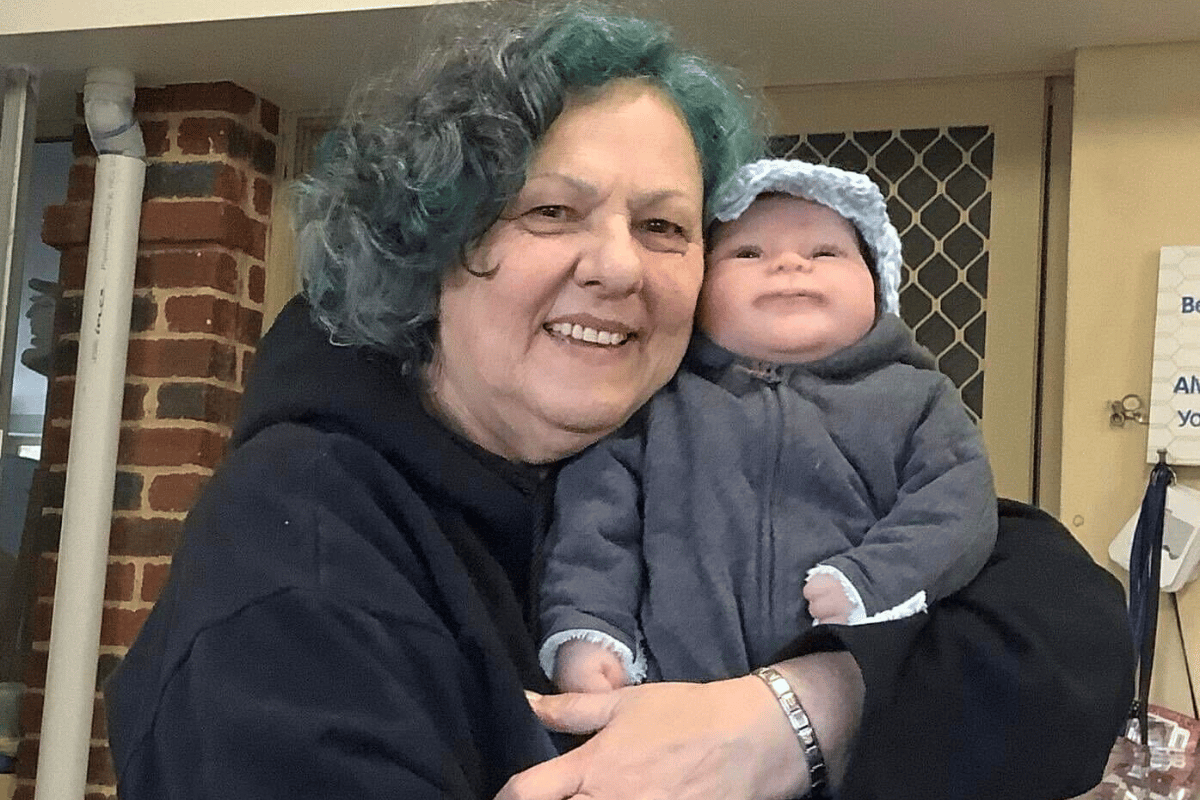 Patrizia and her full silicone doll Daniel. Image: Supplied.
Patrizia and her full silicone doll Daniel. Image: Supplied.
Originally from Western Australia, Patrizia moved to Europe, fell in love and married a local man. Very soon into the relationship he became seriously abusive towards her - physically, sexually and psychologically.
"I would watch the news each night and you would hear of one woman dying every day at the hands of their partner. I knew myself I had to run away from the man next to me, otherwise I would end up dead like those women too," Patrizia tells Mamamia.
"We had three sons together. By the time I had to leave, their father had brainwashed them. They respected him, not as much me."
When Patrizia told her sons why she was leaving, they assured her they would stay in contact. She then never heard from them again.
Upon returning to Western Australia, Patrizia was finally free from the abuse. But there was an immeasurable sacrifice that came with escaping - a loss that took a toll on Patrizia's mental and physical health.
"I was a zombie - going to work, coming home, crying myself to sleep. It wasn't until my sister Laura decided to find and gift me a reborn doll that some of the heaviness lifted and the constant anxiety attacks lessened."
It's been seven years since Patrizia first held a reborn doll. Now aged 67, she is a reborn mother to three boys and seven girls.
Her first doll was Daisy Grace, who Patrizia named after her real-life granddaughter whom she's never met. And Daniel is also particularly special, given he is a more state-of-the-art silicone doll worth $8,000.
When you look at a reborn or silicone doll, the realism in their design is remarkable.
Gyongyi 'Pearl' Vago is a Hungarian-born Australian artist who has been creating dolls for over 16 years via her business Happiness Nursery.
When it comes to creating a reborn doll that looks exactly like a newborn, Pearl tells Mamamia there are plenty of intricacies involved.
It starts with a blank canvas, the mould itself often made by doll sculptors. Then artists like Pearl get to work.
She starts on the skin tone, veins, milk spots and more, which are made with many thin layers of paint. The eyes of the reborn doll are custom-made, often glass.
The hair on the doll's head is made with angora goat mohair or alpaca hair. Each strand is sewn in one by one to mimic a realistic growth pattern of a human's head.
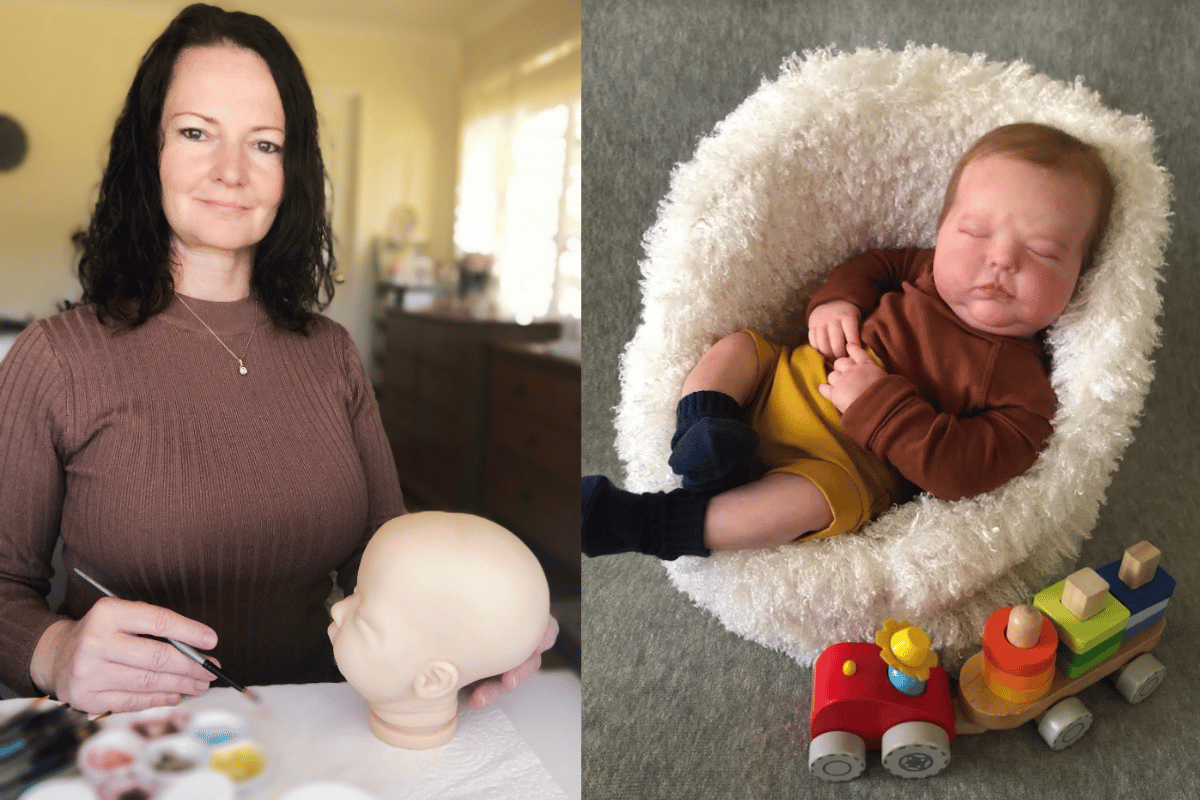 Pearl making her art, and an example of the finished product - a reborn doll. Image: Supplied.
Pearl making her art, and an example of the finished product - a reborn doll. Image: Supplied.
The whole process often takes weeks. Then there's dressing and staging the photos for the doll's online sale - posing the reborn doll realistically like the newborn baby photo sessions many of us have seen before.
This visual aspect of doll collecting is clear when you look online at the growing content from the 'doll mum' community.
There are first-time unboxings of dolls, day-in-the-life role plays, newborn baby clothing hauls, Q&As, nursery tours and more.
Millions of these videos can be seen on TikTok, YouTube and Instagram, and the audience for doll mum content is growing. There are two billion views on the hashtag #reborndoll on TikTok alone.
It's predominantly women who purchase these dolls - which retail between a few hundred to a couple of thousand dollars for the more high-end options - and there's a thriving sub-culture online, akin to a real-life mother's group.
Victoria is in her 20s and loves collecting dolls, dressing them in muted soft pinks and beige tones. She has over 350,000 followers on her social media platforms, and over 10 million likes on her content.
@ellsearth summer nights ☁️ #babyaesthetic #babyfever #newbornbaby #babiesoftiktok #babylove #rebornbaby #dollcollector #reborncollector #nightroutine ♬ seven by taylor swift - selina
Some of her videos include her reborn doll's outfits of the day or role play nighttime routine. When asked by fans whether she can see the distinction between play and real life, Victoria has been adamant.
"I just love the baby fashion so much, that's the main reason I got into this hobby. It's a gorgeous piece of handmade art. On a more personal note, I cannot wait to start to a family of my own one day, at this time in my life I am not ready," she said recently.
TikToker Taeshon Miller describes herself as a reborn mama to a series of dolls, including E'miyah, Taemeka and Cheyenne. She regularly posts videos of her styling their hair or documenting a day out together.
She first started collecting reborns following a hysterectomy. The therapy dolls became a source of comfort for her.
"I only have one daughter, she's 14, and I was really sad after the hysterectomy because that meant I couldn't have [any more] kids. So I started looking online at the reborn dolls."
@taeshonmiller1 Replying to @ash I hope I answered your question💚I love my #reborn babies #fyp ♬ original sound - Taeshonmiller1
Interestingly, there's often debate among these bloggers in the public eye over how best to 'parent' their reborn dolls. The contention lies over whether people should feed their reborn dolls real baby formula, many now use a pretend baby formula when doing day-in-the-life videos rather than wasting the authentic in-demand product.
For Patrizia, she shares with Mamamia that she has bottles for her Daniel, using a mixture of fabric softener and water to mimic the appearance of baby formula. She mainly uses these bottles as props in photos, as well as keeping one in the doll's pram.
The whole real-versus-fake formula discourse has prompted conversations about where the line is between real life and role play. But for those who collect dolls, they understand this line - and they acknowledge it.
What's clear is that there's judgement in every parenting community, including those who collect reborn dolls.
For Patrizia, she has experienced such stigma firsthand. And there's nothing more corrosive than the feeling of shame.
She always takes a reborn doll with her, whether it's collecting the groceries or going shopping. By having one of her reborn dolls with her, it has drastically lessened her anxiety levels.
Patrizia says she no longer experiences anxiety attacks while away from the comfort cocoon she has created in her home.
"Just last week my sister and I went for a coffee, and I brought Daniel with me. A man at the cafe said to me: 'Wow that's a good baby they haven't made a peep'. I then smiled and said: 'That's because he's not a real baby. He's my therapy baby'."
When Patrizia uses the phrase "therapy baby" to explain her reborn dolls to strangers, she says their faces immediately soften and they nod their head with empathy.
"Some don't understand it or find it weird," she explains.
"People just aren't aware. They might think we're stupid women playing with dolls, or that we're crazy. But there's a meaning behind it - often people use these therapy dolls because of something that has happened in their life. We're just women who are trying to cope the best way we can."
Christina, 38, collects hyper-realistic dolls "to help cope" with the death of her first baby.
When Christina miscarried at eight weeks, which doctors believe was due to complications with her endometriosis, Christina watched a documentary about reborn dolls. She has said it was a lightbulb moment for her.
"When we lost the baby it was so devastating. I felt so blessed to have two healthy girls, but that feeling of missing the first baby never quite went away," she explained recently.
"When my youngest was around two years old, my husband and I came across a documentary about reborn dolls. And he was like, 'That's really weird', and I played it off that I thought the same, but actually I really wanted one to help me cope and I thought it would be the perfect solution."
Christina now has a collection of five reborn dolls, and speaks openly about her journey via her YouTube channel 'The Reborn Family'.
"I have healed tremendously from that loss because I'm able to talk about it and share my story and help others - it helped my grief for sure."
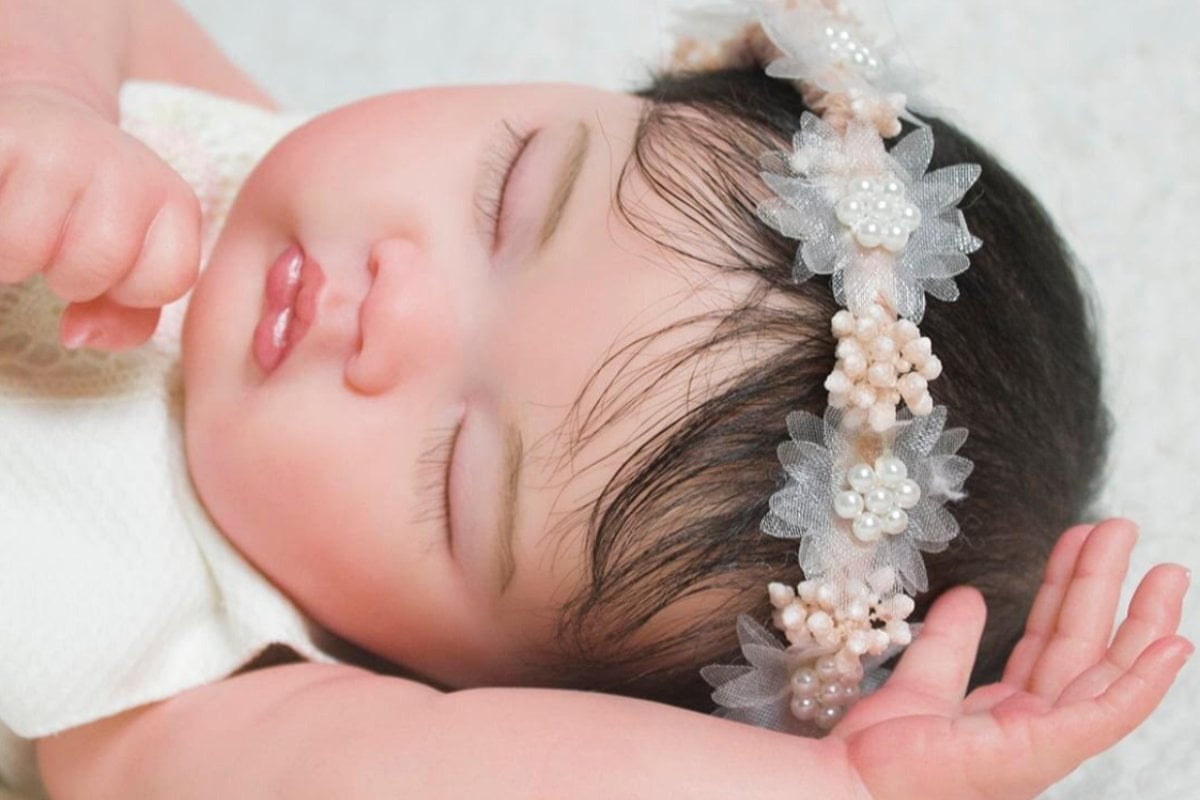 One of the reborn dolls being posed for a photoshoot. Image: Happiness Nursery art dolls by Pearl.
One of the reborn dolls being posed for a photoshoot. Image: Happiness Nursery art dolls by Pearl.
Carly Dober is a psychologist and the director at the Australian Association of Psychologists Incorporated. She's worked with a number of people struggling post-loss.
Carly explains reborn dolls are not a new therapy treatment, with them being used sometimes by GPs and midwives. As for the commonality of these dolls being recommended by health professionals, Carly notes it isn't common, adding while "it isn't for everyone, it can be beneficial for some".
Although the use of reborn dolls as therapy, like any therapeutic strategy, isn't 100 per cent foolproof for every individual, they can be helpful for an individual adjusting to life post-loss.
"Amid child loss, often the body doesn't really understand that the baby is no longer there, and so the hormones continue. Under therapeutic guidance, some women benefit from using a reborn doll and holding it as comfort until their grief shifts to the next phase," Carly tells Mamamia.
"The dolls can be seen as a bit taboo. But complex loss should always be met with kindness, because for people who use these dolls, they're simply trying their best to cope."
When connecting with the hundreds of customers she has made dolls for, Pearl says the age demographic among them ranges between 25 and 65. As for why they are purchasing a doll from Pearl - there's a pattern.
"Some people buy for the sake of doll collecting, saying it's a fun hobby. Then some ladies buy reborns to help their mental health, or they have a sad reason of child loss, miscarriages," she explains.
"When I get feedback from a customer, it almost always starts with 'Pearl, I can't thank you enough...' To see the comfort and happiness it provides - that's what keeps me going. I think people need to be more open-minded. There's no need to judge someone on a negative level - if having a reborn is adding something positive to your life and makes you feel better, then go for it."
Patrizia feels exactly the same, noting she feels there's a double standard.
"Just like us women who have dolls and role play mothering them, lots of guys have beautiful cars that they name, polish, attend to and take out once when the sun's shining. But it feels like we are judged far greater, simply because our hobby is far less mainstream."
For the past few years, Patrizia has been running a support group called My Therapy Reborn Group, which has just under 1000 members.
A bunch of the Western Australia members meet up every three weeks, whether it's sitting in a local park with their prams and reborn dolls, or bonding with one another at an organised retreat.
"A lot of these women have mental health issues," notes Patrizia. "Some have a disability, one is on the spectrum, another cannot have kids, and others have traumas. It's a safe space for us to express ourselves and talk about our babies."
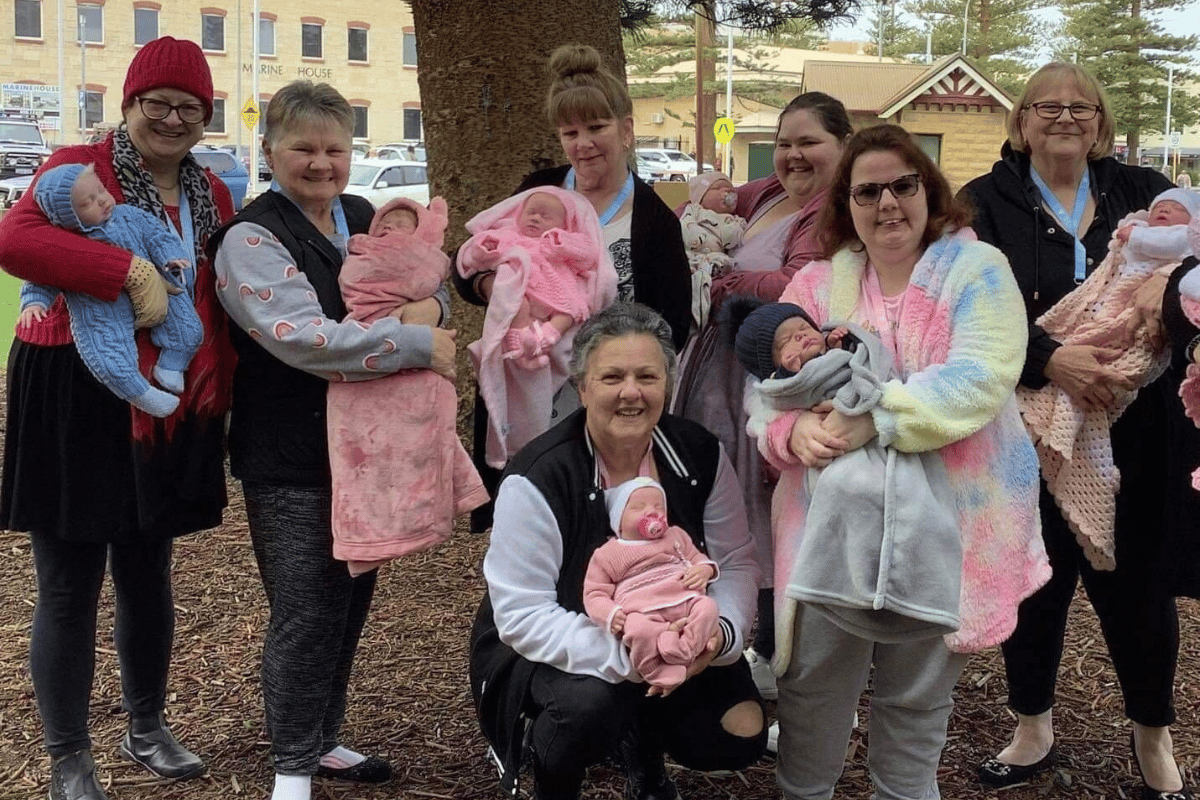 Patrizia and the women from her therapy group all bonding together with their reborn dolls. Image: Supplied.
Patrizia and the women from her therapy group all bonding together with their reborn dolls. Image: Supplied.
Ultimately, having a reborn doll isn't for everyone. Some may still find the hyperrealism of the dolls a little creepy. But for Patrizia, her hope is that women out there who are struggling know therapy dolls are an option.
"The first time I rocked up to a session with my psychologist, and I had one of my reborn dolls with me, he was confused. But he has seen such a big difference in me. My emotions are far more stable now, my physical health has improved. It's completely changed my life, and so he is all for it," says Patrizia.
Today, Patrizia feels far more at peace with her life.
There are, of course, still bad days, particularly Mother's Day.
She says it's the worst day of her year, locking herself in her home, not wanting to communicate with anyone and sleeping through the day until it's over.
The same is said for her three sons' birthdays. But she holds onto her memories and cherishes them, because "no one can take those memories away from me".
"When I hold one of my reborn babies to my chest, it takes me right back to when my sons were little. All those nurturing, comforting feelings flood back. It's my dolls and the women in my group who bring joy to my life now and keep me going."
If this post brings up any issues for you, or if you just feel like you need to speak to someone, please call 1800 RESPECT (1800 737 732) – the national sexual assault, domestic and family violence counselling service. It doesn’t matter where you live, they will take your call and, if need be, refer you to a service closer to home.
If you think you may be experiencing depression or another mental health problem, please contact your general practitioner. If you're based in Australia, 24-hour support is available through Lifeline on 13 11 14 or beyondblue on 1300 22 4636.
If this has raised any issues for you or if you would like to speak with someone, please contact the Red Nose Grief and Loss Support Line, which is available 24/7 for anyone affected by miscarriage, stillbirth, baby or child death, on 1300 308 307.
Feature image: Supplied/Gyongyi 'Pearl' Vago.

